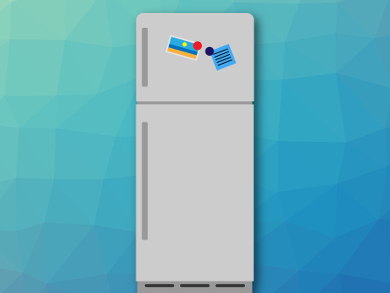Electrocaloric materials reversibly change temperature when applied to an applied electric field. In other words, the materials show large electrically-driven thermal changes around the phase transition point. Electrocaloric materials could have potential for cooling applications. Despite this, the energy efficiency of these materials has rarely been studied.
Emmanuel Defay, Luxembourg Institute of Science and Technology (LIST), Université Grenoble Alpes, France, and University of Cambridge, UK, Neil D. Mathur, University of Cambridge, and colleagues have investigated the efficiency of commercially available BaTiO3-based multilayer capacitors for energy recovery in refrigeration applications. The researchers measured the efficiency in a prototype electrocaloric effect refrigerator. They explored how to artificially recover as much as possible of the electrical work done (positive W) to charge and thus heat an electrocaloric capacitor when it subsequently discharges (negative W) and thus cools.
The team was able to recover at least 65 % of the work done to drive electrocaloric effects for a prototype refrigerator with 24 capacitors. This improves performance by a factor of 2.9. According to the researchers, this is due to the fact that most of the work done to drive the electrocaloric cycles does not pump heat and may, therefore, be recovered.
This approach makes electrocaloric effects as efficient as magnetocaloric effects. Here work is automatically recovered. Based on the study’s results, electrically-driven materials could be a viable alternative to mechanically-driven magnetocaloric prototypes. Especially, in the light that magnetocaloric materials and permanent magnets remain expensive, while electrocaloric ceramics and polymers tend to be cheap to both fabricate and drive.
- Enhanced electrocaloric efficiency via energy recovery,
E. Defay, R. Faye, G. Despesse, H. Strozyk, D. Sette, S. Crossley, X. Moya, N. D. Mathur,
Nat. Commun. 2018.
https://doi.org/10.1038/s41467-018-04027-9



